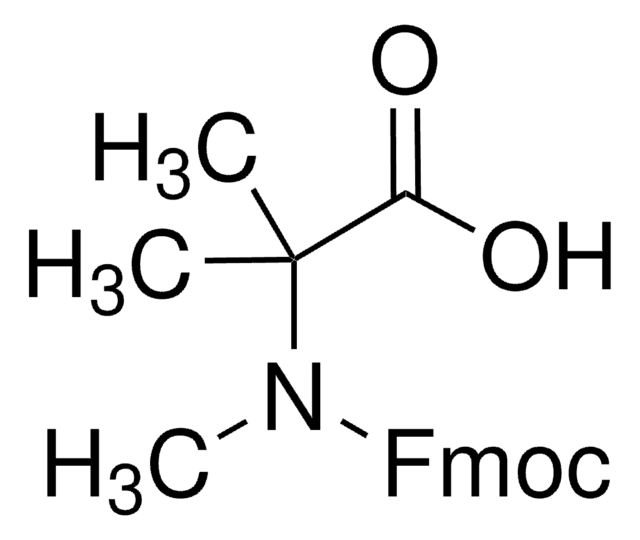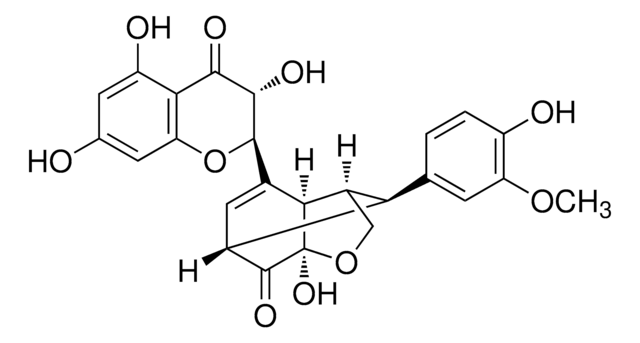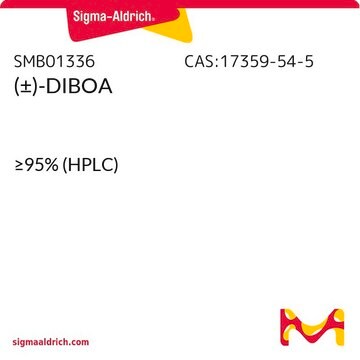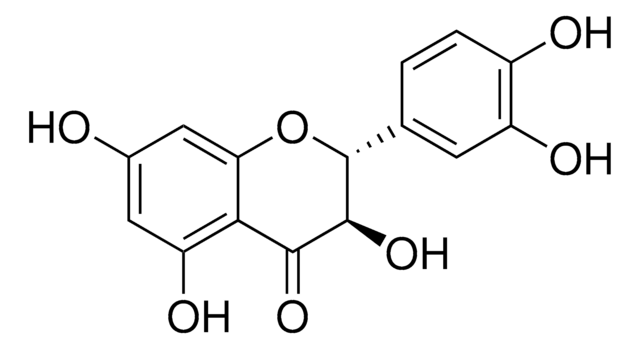30494
Silydianin
analytical standard
Synonim(y):
Silidianin
About This Item
Polecane produkty
klasa czystości
analytical standard
Poziom jakości
Próba
≥95.0% (HPLC)
okres trwałości
limited shelf life, expiry date on the label
metody
HPLC: suitable
gas chromatography (GC): suitable
zanieczyszczenia
≤10.0% residual solvents (GC-HS)
≤10.0% water
Zastosowanie
food and beverages
format
neat
temp. przechowywania
2-8°C
ciąg SMILES
COc1cc(ccc1O)[C@@H]2[C@H]3CO[C@]4(O)[C@H]3C(=C[C@H]2C4=O)[C@H]5Oc6cc(O)cc(O)c6C(=O)[C@@H]5O
InChI
1S/C25H22O10/c1-33-16-4-9(2-3-14(16)27)18-11-7-12(20-13(18)8-34-25(20,32)24(11)31)23-22(30)21(29)19-15(28)5-10(26)6-17(19)35-23/h2-7,11,13,18,20,22-23,26-28,30,32H,8H2,1H3/t11-,13-,18+,20+,22+,23-,25-/m1/s1
Klucz InChI
CYGIJEJDYJOUAN-JSGXPVSSSA-N
Szukasz podobnych produktów? Odwiedź Przewodnik dotyczący porównywania produktów
Zastosowanie
Opakowanie
Wybierz jedną z najnowszych wersji:
Masz już ten produkt?
Dokumenty związane z niedawno zakupionymi produktami zostały zamieszczone w Bibliotece dokumentów.
Klienci oglądali również te produkty
Nasz zespół naukowców ma doświadczenie we wszystkich obszarach badań, w tym w naukach przyrodniczych, materiałoznawstwie, syntezie chemicznej, chromatografii, analityce i wielu innych dziedzinach.
Skontaktuj się z zespołem ds. pomocy technicznej











